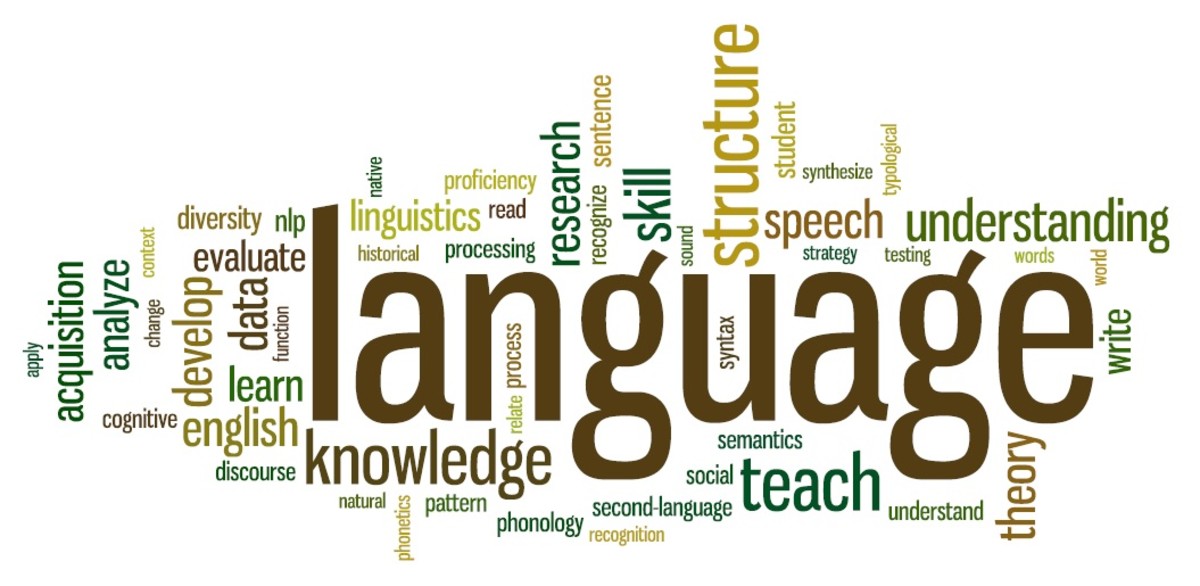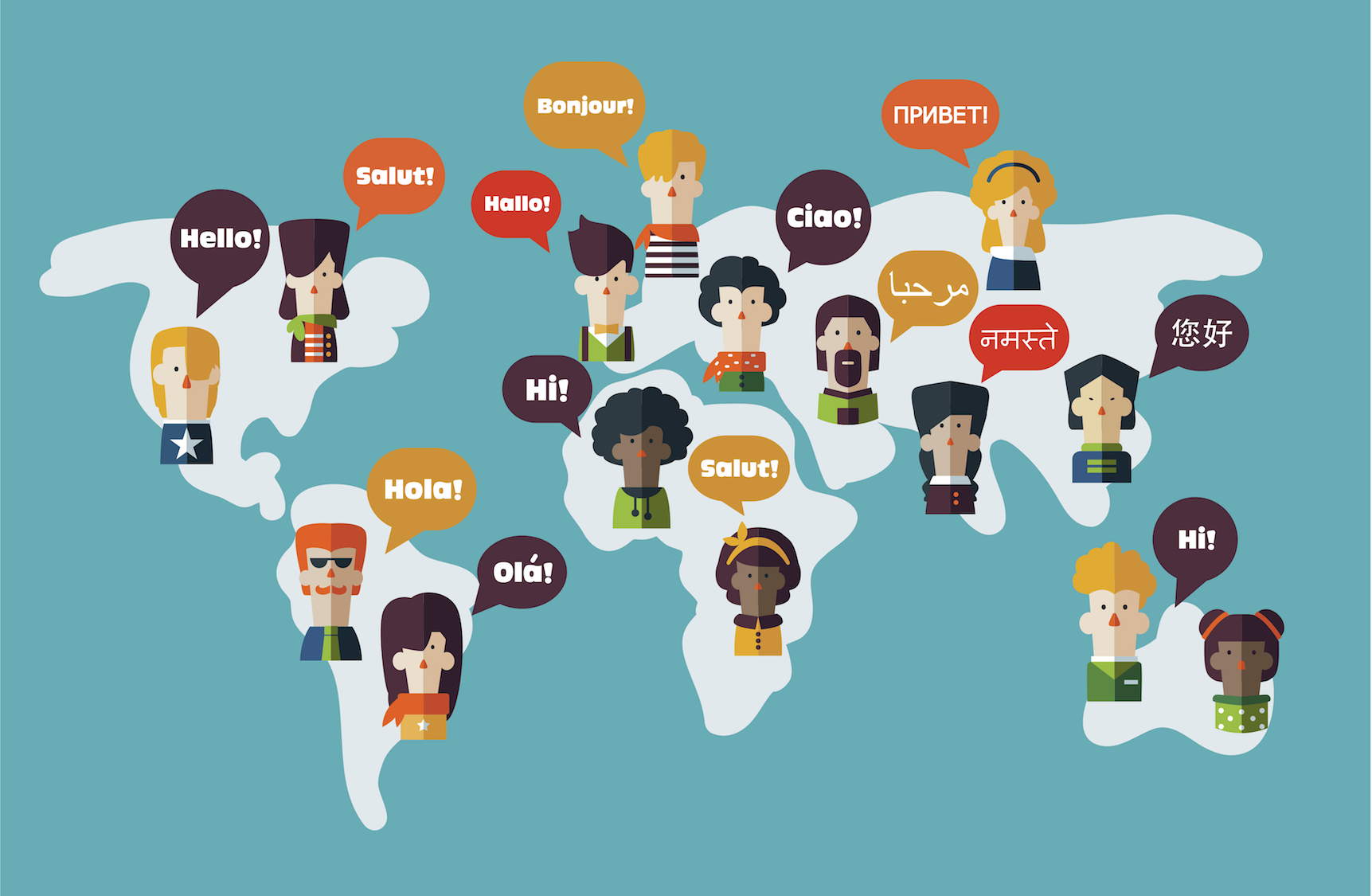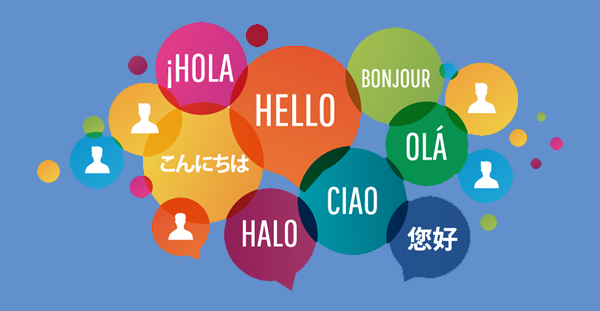Unraveling Iran's Linguistic Tapestry: What Language Do Iranians Speak?
Iran, a land steeped in ancient history and rich culture, is often perceived through the lens of its official language, Persian. However, the question of "what language speak in Iran" reveals a far more intricate and vibrant linguistic landscape than many might imagine. Beyond the widely recognized Farsi, the nation is a true mosaic of tongues, reflecting centuries of migration, conquest, and cultural exchange. This article delves deep into the complexities of language in Iran, exploring its constitutional framework, the pervasive role of Persian, and the fascinating array of other languages spoken by its diverse populace.
From the bustling bazaars of Tehran to the remote villages nestled in the Zagros Mountains, Iran's linguistic diversity is a testament to its unique geopolitical position and historical narrative. While Persian undoubtedly serves as the unifying thread, understanding the full scope of languages spoken across the country offers invaluable insight into Iran's social fabric, regional identities, and enduring cultural heritage. Join us as we navigate this rich linguistic terrain, shedding light on the languages that shape the daily lives and identities of millions.
Table of Contents
- The Cornerstone: Persian (Farsi) as Iran's Official Language
- A Mosaic of Tongues: Iran's Diverse Minority Languages
- Other Indigenous Iranian Languages
- Ancient Voices: Lesser-Spoken Minority Languages
- The Rise of Foreign Languages in Iran
- Understanding "Iranian" vs. "Iranic" Languages
- The Significance of Linguistic Preservation
- Navigating Iran's Multilingual Landscape
The Cornerstone: Persian (Farsi) as Iran's Official Language
When considering what language speak in Iran, Persian, locally known as Farsi, immediately comes to mind. It is unequivocally the official language of Iran, a status enshrined in the nation's constitution and deeply woven into its cultural identity. Spoken by approximately 70% of the population, Persian serves as the primary means of communication across all facets of Iranian life, from education and government to media and everyday interactions. Its prominence is not merely a matter of numbers but a reflection of its historical role as a language of poetry, science, and governance for centuries.
Constitutional Mandate and National Identity
The linguistic policy of Iran is clearly articulated in Chapter Two of the Constitution of the Islamic Republic of Iran, specifically in Articles 15 and 16. These articles assert that the Persian language is the lingua franca of the Iranian nation. This constitutional mandate means that Persian is not just preferred but required for the national school system and for all official government communications. This policy ensures a unified administrative and educational framework across the vast and diverse country, reinforcing a shared national identity through language. The constitutional backing highlights the strategic importance of Persian in maintaining national cohesion and facilitating communication among its varied ethnic and linguistic groups.
The Dominance of Persian: Speakers and Dialects
Persian's widespread use makes it the predominant language spoken in Iran. It serves as the mother tongue for roughly 60% of Iran's population, and it is widely understood and spoken by the majority of Iranians, even those whose first language is a regional dialect. This broad comprehension ensures effective communication throughout the country. However, to say "Persian" is to simplify a rich linguistic reality. In Iran, the Persian language represents over 100 dialects and even more accents. These variations reflect regional nuances, historical developments, and the influences of neighboring languages. For instance, while a Tehrani accent might be considered standard, dialects like Dari (spoken in Afghanistan) or Tajik (spoken in Tajikistan) are closely related and mutually intelligible to varying degrees. This vast array of dialects within Persian itself adds another layer of complexity to the question of what language speak in Iran, showcasing the language's adaptability and evolution across different communities.
A Mosaic of Tongues: Iran's Diverse Minority Languages
While Persian holds official status and widespread use, the nation's linguistic diversity is truly vast, encompassing numerous minority languages and dialects. Iran's linguistic landscape flourishes with diverse tongues that hold significant regional importance. These languages are not merely relics of the past but vibrant, living languages spoken by millions, embodying the country's commitment to preserving cultural heritage and linguistic identity in various regions. Understanding these languages is crucial to fully grasp what language speak in Iran beyond the official Farsi.
Turkic and Kurdish: Major Regional Languages
Among the most prominent regional languages, Turkic (primarily Azerbaijani Turkish) and Kurdish stand out. Turkic languages, especially Azerbaijani, are predominantly spoken in the northwest of Iran, particularly in provinces like East Azerbaijan, West Azerbaijan, Ardabil, and Zanjan. Azerbaijani Turkish, while distinct from Turkish spoken in Turkey, is mutually intelligible and represents a significant linguistic community within Iran. Kurdish, on the other hand, is widely spoken in the western parts of Iran, particularly in provinces bordering Iraq, such as Kurdistan, Kermanshah, and parts of West Azerbaijan. Both Kurdish and Azerbaijani are members of different language families (Indo-European for Kurdish, Turkic for Azerbaijani) but are major regional languages that contribute significantly to the answer of what language speak in Iran.
Arabic's Enduring Presence and Historical Roots
Arabic is another top regional language spoken in Iran, holding significant importance due to its historical and cultural influence on the country. Although Persian is the official language, Arabic is widely spoken in certain regions, particularly the southwestern province of Khuzestan, which shares a border with Iraq. Its presence dates back approximately 1400 years, entering Iran with the advent of Islam. Beyond Khuzestan, Arabic dialects are also spoken along the Persian Gulf coast in the south, reflecting centuries of trade, migration, and religious ties. The historical depth and regional concentration of Arabic speakers underscore its enduring role in Iran's linguistic tapestry, adding a unique dimension to the question of what language speak in Iran.
Other Indigenous Iranian Languages
Beyond Persian, Kurdish, and Azerbaijani, Iran is home to a rich array of other indigenous Iranian languages. These languages, while sharing linguistic roots with Persian, have evolved distinctly over centuries, preserving unique cultural narratives and regional identities. Among these are Luri, Gilaki, Mazanderani, and Balochi. Luri is spoken by the Lur people, primarily in the southwestern provinces of Lorestan, Kohgiluyeh and Boyer-Ahmad, and parts of Khuzestan. It is closely related to Persian but has its own distinct phonology and vocabulary. Gilaki and Mazanderani are Caspian languages spoken along the southern coast of the Caspian Sea, in the provinces of Gilan and Mazandaran, respectively. These languages are known for their unique grammatical structures and extensive vocabularies that differ significantly from standard Persian. Balochi is spoken by the Baloch people, primarily in the southeastern province of Sistan and Baluchestan, extending into neighboring Pakistan and Afghanistan. These languages, though not as widely spoken as Persian, are crucial components of Iran's linguistic heritage and demonstrate the deep historical layers that contribute to what language speak in Iran today.
Ancient Voices: Lesser-Spoken Minority Languages
In addition to the more widely recognized regional languages, Iran is also home to numerous minority languages with smaller speaker populations, many of which carry significant historical and cultural weight. These languages often belong to specific ethnic or religious communities that have maintained their linguistic traditions over centuries. Examples include Hebrew, Armenian, Assyrian, Georgian, and Circassian. Hebrew, for instance, is spoken by Iran's Jewish community, one of the oldest Jewish populations in the world. Armenian is the language of the Armenian Christian community, concentrated in cities like Tehran, Isfahan, and Tabriz. Assyrian, an Aramaic language, is spoken by the Assyrian Christian community, primarily in the northwest. Georgian is spoken by a small community of Georgians, descendants of those brought to Iran centuries ago. Circassian, another Caucasian language, is also found among smaller communities. These languages, though spoken by fewer individuals, represent invaluable cultural heritage and contribute to the incredible diversity of what language speak in Iran, highlighting the country's long history of accommodating various ethnic and religious groups.
The Rise of Foreign Languages in Iran
Beyond its indigenous and regional languages, Iran has also seen a growing prevalence of foreign languages, particularly among younger generations and in urban centers. This trend reflects increasing globalization, educational opportunities, and a desire for international communication. When considering what language speak in Iran, it's important to acknowledge this aspect of its linguistic landscape.
- English: Younger Iranians are particularly likely to speak English. It has become the most widely chosen foreign language for study and is increasingly used in business, academia, and popular culture. While not an official language, its utility as a global lingua franca makes it highly sought after.
- French: Older generations in Iran are likely to have some French abilities. French held significant prestige and was the second official language of Iran until the 1950s. Its influence can still be seen in some older literature, architecture, and even loanwords in Persian.
- Other European Languages: After English and French, German, Spanish, and Italian are among the main languages chosen by people for study. These choices often reflect cultural interests, academic pursuits, or economic ties with European countries.
- Arabic (as a foreign language): While Arabic is a regional language in some parts of Iran, it is also studied as a foreign language by many Iranians, particularly due to its religious significance (as the language of the Quran) and its importance in Islamic studies.
The increasing adoption of foreign languages, especially English, indicates a forward-looking aspect of Iran's linguistic evolution, as its citizens seek to connect with the wider world while maintaining their rich domestic linguistic traditions.
Understanding "Iranian" vs. "Iranic" Languages
To fully comprehend what language speak in Iran, it's crucial to distinguish between the terms "Iranian" and "Iranic" languages. These terms, while seemingly similar, refer to different concepts:
- "Iranian" can simply mean anything related to Iran—such as its people, government, or culture—regardless of what language is spoken. An Iranian citizen, for example, might speak Persian, Azerbaijani, or Armenian.
- "Iranic languages," on the other hand, refer to a specific branch of the Indo-Iranian language family, which itself is a branch of the Indo-European language family. All Iranic languages are connected by linguistic roots, sharing a common ancestor. Persian, Kurdish, Luri, Gilaki, Mazanderani, and Balochi are all examples of Iranic languages spoken in Iran. However, not all Iranian citizens necessarily speak an Iranic language. For instance, a significant portion of Iran's population speaks Azerbaijani Turkish, which is a Turkic language (part of the Altaic family), not an Iranic language. Similarly, Armenian is an Indo-European language but belongs to its own distinct branch, separate from the Iranic branch.
This distinction highlights that while Iran is predominantly an Iranic-speaking country, its population is ethnically and linguistically diverse, encompassing speakers of various language families. This nuance is vital for a comprehensive answer to what language speak in Iran.
The Significance of Linguistic Preservation
Iran's commitment to preserving its linguistic heritage is evident in the regional status enjoyed by a multitude of languages. While Persian is the official language, the recognition and continued use of minority languages embody the country's dedication to maintaining its rich cultural tapestry. This commitment is not just about language itself but about the cultural identities, traditions, and historical narratives that each language carries. For instance, the unique literary traditions of Kurdish or the historical significance of Armenian in Iran are deeply intertwined with their respective languages. Efforts to document, teach, and promote these languages, even within a Persian-dominant framework, are crucial for ensuring that Iran's vibrant linguistic diversity continues to flourish for generations to come. This ongoing preservation effort underscores the profound value placed on every tongue that contributes to what language speak in Iran.
Navigating Iran's Multilingual Landscape
Navigating the linguistic landscape of Iran requires an appreciation for its complexity and depth. While Persian serves as the primary language of communication, education, and government, the presence of numerous regional and minority languages enriches the country's cultural fabric. For visitors or those interested in Iran, understanding that "most people speak English in Iran" (especially among younger generations in urban areas) can be helpful for practical communication, but a deeper dive reveals the true linguistic wealth. From the ancient roots of Persian, which has played a vital role in the literary, cultural, and scientific heritage of the Iranian people, to the vibrant contemporary use of Azerbaijani, Kurdish, and Arabic in their respective regions, Iran is a living testament to linguistic diversity. The presence of languages like Hebrew, Armenian, Assyrian, Georgian, and Circassian further illustrates the historical layers that define what language speak in Iran. This intricate interplay of languages makes Iran a fascinating case study in how a nation balances national unity with regional identity and cultural preservation.
Conclusion
In conclusion, the question of "what language speak in Iran" reveals a country far more linguistically diverse than often perceived. While Persian (Farsi) stands as the official language, unifying the nation through its constitutional mandate and widespread use in education and government, it is merely the cornerstone of a much larger linguistic edifice. Iran is a vibrant mosaic of tongues, encompassing major regional languages like Azerbaijani and Kurdish, historically significant languages such as Arabic, and numerous smaller, yet culturally vital, minority languages like Luri, Gilaki, Mazanderani, Balochi, Hebrew, Armenian, Assyrian, Georgian, and Circassian.
Furthermore, the increasing proficiency in foreign languages, particularly English among the youth, signifies Iran's growing connection to the global community. This rich tapestry of languages not only reflects Iran's complex history and diverse ethnic groups but also underscores its commitment to preserving cultural heritage. Understanding this linguistic wealth is key to appreciating the depth and multifaceted nature of Iranian society. We hope this comprehensive exploration has provided valuable insights into the fascinating world of languages spoken in Iran. What surprised you most about Iran's linguistic diversity? Share your thoughts in the comments below, and feel free to explore other articles on our site to learn more about this captivating nation!
Article Recommendations



Detail Author:
- Name : Percival Hudson
- Username : allison.schimmel
- Email : eve51@yahoo.com
- Birthdate : 1983-04-04
- Address : 1496 Howell Freeway Suite 321 Stammville, WI 11756-0039
- Phone : 954-469-9635
- Company : Tillman-Kris
- Job : Rigger
- Bio : Voluptas nam aut sunt eos. Cum repudiandae fuga perferendis quia sed cupiditate. Eius a minima consectetur sint consectetur quaerat reprehenderit. Magnam soluta quibusdam iure eius ut et.
Socials
instagram:
- url : https://instagram.com/nienow1986
- username : nienow1986
- bio : Voluptate qui iste aut quia eum aut. Error voluptas sunt error aut nisi. Dolorem veniam ipsa sunt.
- followers : 5896
- following : 1500
facebook:
- url : https://facebook.com/nienowr
- username : nienowr
- bio : Ab sed dolorem libero inventore. Culpa magnam ea cum est ut.
- followers : 6860
- following : 2970
linkedin:
- url : https://linkedin.com/in/nienow1986
- username : nienow1986
- bio : Deleniti natus iure vel sit accusamus qui.
- followers : 2295
- following : 2709
tiktok:
- url : https://tiktok.com/@rafaela8093
- username : rafaela8093
- bio : Numquam voluptatem aliquid ducimus illum architecto.
- followers : 1845
- following : 1939